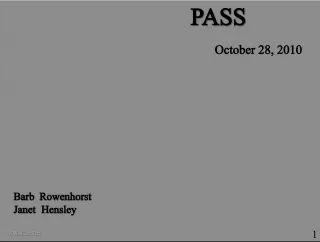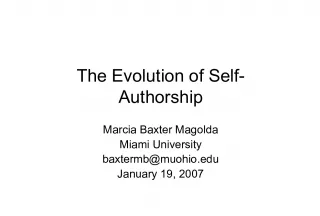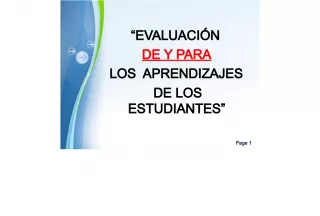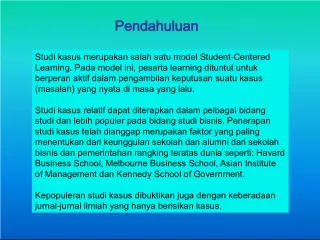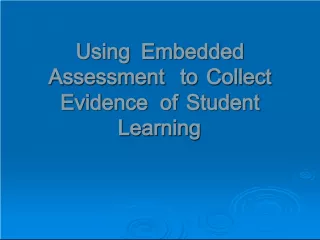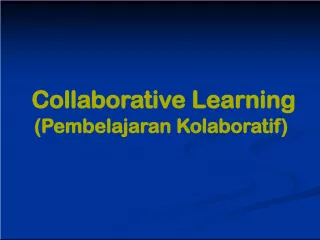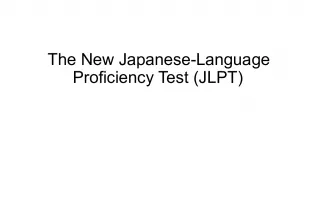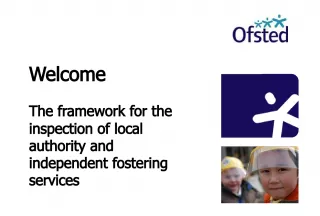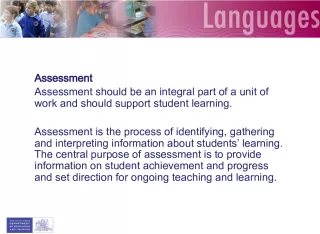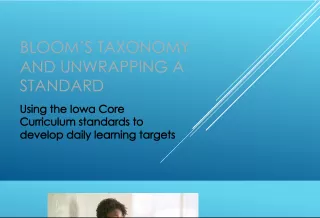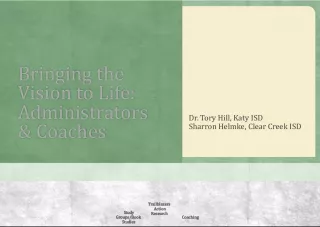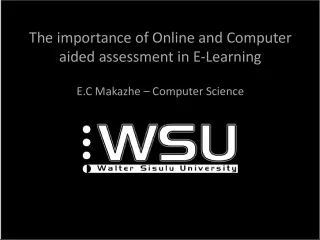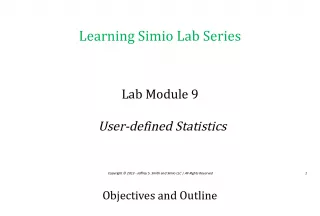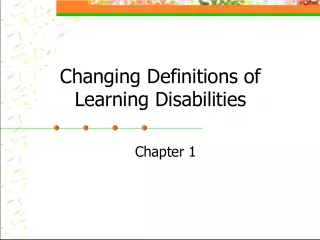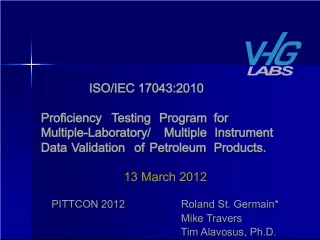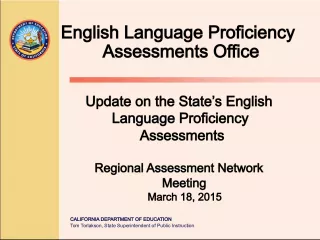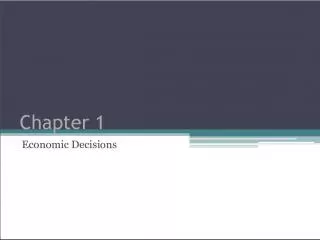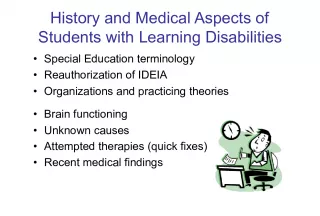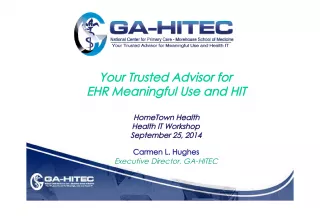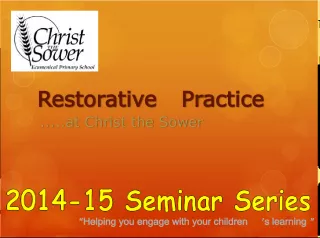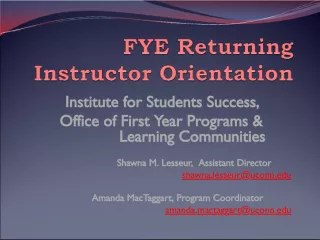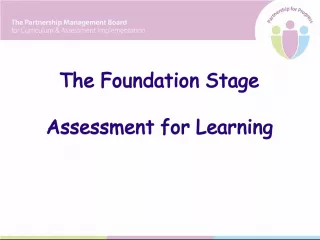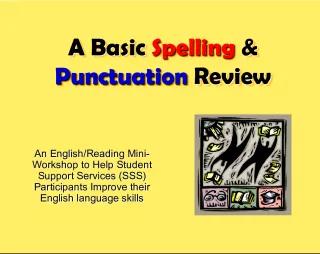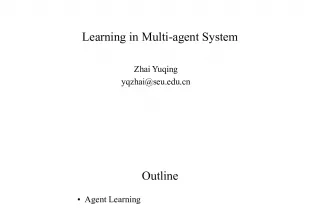Student Services Learning Outcomes Journey to Proficiency
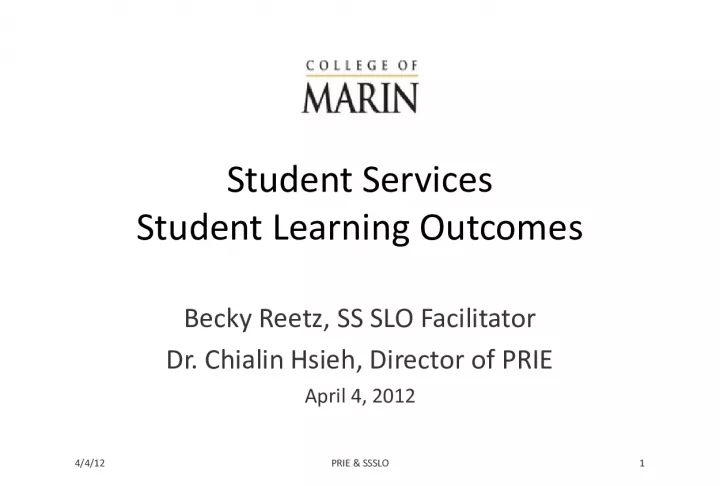

Students learning outcomes are made simple, meaningful, and sustainable, through a journey of leadership, facilitation, assessment, and implementation of program changes. Results are analyzed and reported for resource allocation and program review.
- Uploaded on | 1 Views
-
 barb
barb
About Student Services Learning Outcomes Journey to Proficiency
PowerPoint presentation about 'Student Services Learning Outcomes Journey to Proficiency'. This presentation describes the topic on Students learning outcomes are made simple, meaningful, and sustainable, through a journey of leadership, facilitation, assessment, and implementation of program changes. Results are analyzed and reported for resource allocation and program review.. The key topics included in this slideshow are . Download this presentation absolutely free.
Presentation Transcript
1. Student Services Student Learning Outcomes Becky Reetz, SS SLO Facilitator Dr. Chialin Hsieh, Director of PRIE April 4, 2012 4/4/12 PRIE & SSSLO 1
2. Theme for Student Services SLO • Make it simple • Make it meaningful • Make it sustainable Strategy adopted from Philips Graduate Institute and modified to fit College of Marin’s culture 4/4/12 PRIE & SSSLO 2
3. The Journey to Proficiency • Leadership – Student Services SLO Facilitator – Student Services SLO Teams – Administration – Academic Senate • Process – Division SLOs – Program SLOs • Measurement (assessment instrument) • Results of the measurements • Strategies • SLO reports • Resource Allocation Requests – Program Review – Program Changes Implemented and Analyzed 4/4/12 PRIE & SSSLO 3
4. Division-Level SLOs • Identify and use college resources that support student success • Identify and commit to educational goals • Develop effective planning skills that support educational goals and lifelong success • Demonstrate self-advocacy/self-initiative 4/4/12 PRIE & SSSLO 4
5. Division and Program-Level Matrix 4/4/12 PRIE & SSSLO 5
6. Articulating Outcomes • Processes – travel claims or applications are processed efficiently and equitably. • Learning Outcomes – Students who receive training can write an effective resume or can use the campus email system. – students who are served by the Counseling Center report fewer plans to withdraw from campus. – Students who participate in this event can describe the effects of alcohol on drivers. – Students are aware of campus health services. • Satisfaction Indicators – People supported by the program report satisfaction with the service. (From Nichols & Nichols; Mary Allen) 4/4/12 PRIE & SSSLO 6
7. Identify Division Level SLO Develop Program Level SLO based on Division SLO Identify measures to assess Program Level SLO Submit Program Level Annual Assessment Plan Spring 2011 Summer 2011 Fall 2011 Fall 2011 Where We Were and Where We Are 4/4/12 PRIE & SSSLO 7
8. Analyze the data Discuss the results Use results for program improvement Propose Resource Needs Submit Annual Assessment Report Where We Were and Where We Are 4/4/12 PRIE & SSSLO 8 Spring 2011 Spring 2011 Spring 2011 Spring 2011 Spring 2011
9. 4/4/12 PRIE & SSSLO 9
10. Program Level Assessment Plan 4/4/12 PRIE & SSSLO 10
11. Examples of SS SLOs • Students will identify their educational goals during the registration process. • CalWORKs students will demonstrate an understanding of the program eligibility requirements. • Students who receive state subsidized childcare will demonstrate academic progress towards their educational goal. • Students will demonstrate an understanding of why and how students use counseling services. 4/4/12 PRIE & SSSLO 11
12. Examples of SS SLOs • Students will demonstrate their understanding of the Importance of completing their FAFSA by the March 2 nd priority filing deadline. • Students will demonstrate knowledge of the availability of textbooks on reserve in the library. • Students will demonstrate an increased level of knowledge about the college as a result of participating in the orientation. • Students can demonstrate readiness to take placement test exam 4/4/12 PRIE & SSSLO 12
13. Examples of Measurements and Results 4/4/12 PRIE & SSSLO 13
14. Examples of Measurements and Results 4/4/12 PRIE & SSSLO 14
15. Examples of Strategies 4/4/12 PRIE & SSSLO 15
16. Examples of Strategies 4/4/12 PRIE & SSSLO 16
17. Program Level Assessment Report 4/4/12 PRIE & SSSLO 17
18. Student Services Mini Program Review 4/4/12 PRIE & SSSLO 18
19. Student Services SLO Cycle Program Review Cycle Relationship Between SLO and Program Review 4/4/12 PRIE & SSSLO 19
20. ACCJC SLO Rubric • Proficiency 1. Student learning outcomes and authentic assessment are in place for courses, programs and degrees. 2. Results of assessment are being used for improvement and further alignment of institution-wide practices 3. There is widespread institutional dialogue about the results. 4. Decision-making includes dialogue on the results of assessment and is purposefully directed toward improving student learning. 5. Appropriate resources continue to be allocated and fine-tuned. 6. Comprehensive assessment reports exist and are completed on a regular basis. 7. Course student learning outcomes are aligned with degree student learning outcomes. 8. Students demonstrate awareness of goals and purposes of courses and programs in which they are enrolled. 4/4/12 PRIE & SSSLO 20
